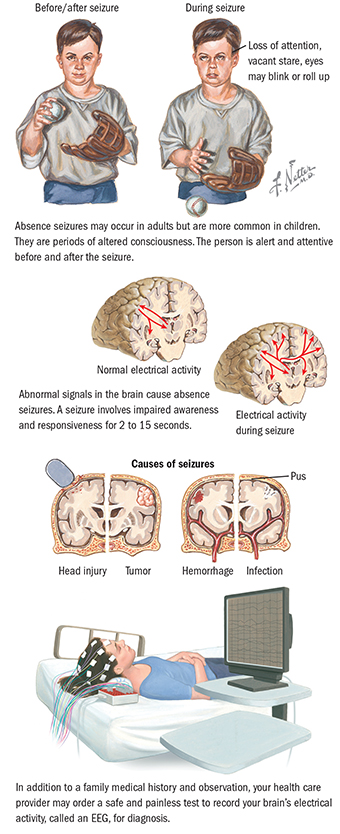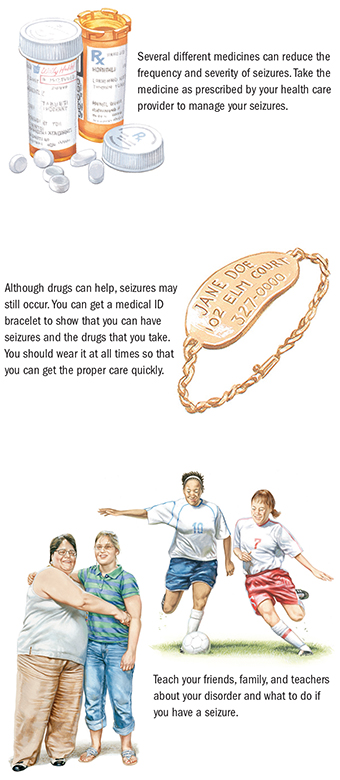
Absence seizures are seizures with periods of altered consciousness, which may be noted only as a blank stare. They may occur in adults but are more common in children. They may be mistaken for daydreaming. Warning signs such as a strange feeling, unusual taste or odor, or headache may come before the seizure.
A seizure is caused by abnormal signals in the brain. Head injuries, strokes, brain infections, or tumors can cause these seizures, but often the reason for them is unknown.
Symptoms in addition to those mentioned above include some fluttering of eyelids and twitching of muscles in the face. Seizures usually last less than 10 seconds and stop by themselves. People are completely unaware of these seizures and continue with their previous activity.
The health care provider uses observations from eyewitnesses and the medical history to diagnose absence seizures. Also, an MRI or CT scan of the brain may be done to tell whether there is a physical cause, such as damage to the brain from congenital defects, stroke, or trauma. The health care provider may also order a brain wave study called an electroencephalogram (EEG). This safe and painless test records the brain’s electrical activity with electrodes placed on the scalp.

Until the seizure disorder is well controlled, precautions may be needed. People living alone should arrange to have help until the health care provider believes that it is safe to resume living alone.
The main treatment is medicine. Sometimes more than one drug may be used. The health care provider may have to take blood samples to make sure that the correct dose is given and may adjust the dose as needed. Often, the medicine will reduce the frequency and severity of the seizures, but some people, even with the medicine, will continue to have seizures. Also, all drugs have side effects.
Contact the following source:
Copyright © 2016 by Saunders, an imprint of Elsevier, Inc.
Ferri’s Netter Patient Advisor